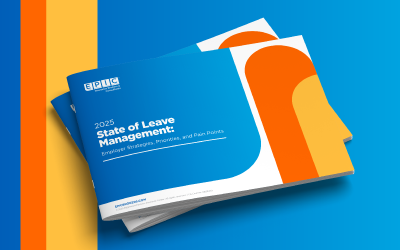EMPLOYEE BENEFITS
Vaccine Costs Aren’t Likely to Break the Banks of Corporate Health Plan Sponsors
The New York Times (NYT) reported that 13 vaccines are currently in the final stages of testing. Phase 1 testing involves a small sample of people to test safety, dosage, and confirm that the immune system is stimulated by the drug. Phase 2 increases the sample to hundreds of people, testing further for safety/efficacy, and segments the test group to see if different populations experience different outcomes. Phase 3 involves thousands of patients, some of whom receive a placebo. Along the path toward approval, testing may be halted in the event adverse or unexpected outcomes are noted. This has happened a few times with COVID-19 vaccine testing, and after small delays, testing resumed. For COVID-19, the FDA established a minimum threshold of 50% effectiveness to clear Phase 3. After this phase is cleared, manufacturers can seek early or limited approval.
Each country establishes its own approval process. Both Russia and China opted to begin immunizations without waiting for Phase 3 results. Pfizer/BioNTech and Moderna have cleared Phase 3, however, with an effectiveness of 90% or greater, and have requested emergency use authorization in the United States. On December 2, the United Kingdom gave emergency authorization to the Pfizer/BioNTech vaccine. The United States is expected to follow suit within the next two weeks.
NYT also reported that the U.S. federal government has purchased 100 million doses each of the Moderna and Pfizer/BioNTech vaccines, to start being delivered in December, and has an option to acquire 500 million more Pfizer/BioNTech doses. Current vaccines all require two doses to be effective, with a lag of 3-4 weeks between injections. The U.S. government intends to distribute these vaccines, along with equipment, to private physicians, pharmacies, clinics, and purpose-built sites and has stated that they will not charge for the vaccines, equipment, or shipping.
Viewpoints from Craig Hasday
My colleague, Patrick Gallagher, has been researching the potential costs of COVID-19 vaccination in 2021 for employer plans.
Through the Centers for Medicare & Medicaid Services (CMS) website he has determined that, depending on the site of care, we should expect that most of the providers who administer the vaccine will charge for it. Medicare will pay providers a total of $45 ($17 for the initial dose, $28 for the follow-up dose). One benchmark for the potential charge to private employers is the cost of a single-dose flu vaccine – pharmacies’ net charge is around $34 (which includes the $16 cost for them to buy the flu shot), so perhaps $68 for a two-dose inoculation, 150% of the Medicare rate is a reasonable expectation. Clinics/doctors may charge a little more, and this will be offset by state/municipal pop-up efforts that may not bill insurers. Aetna confirmed this, releasing a directive to brokers that pegs the reimbursement rate for administration at $16.94 for the first dose and $28.39 for the second dose (or for a vaccine with a single-dose requirement).
The U.S. is targeting 70% inoculation by the end of May 2021 assuming:
1) additional drugs will be proved effective and get approved, 2) manufacturers meet production goals and distribution timelines, and 3) vaccine skepticism is limited. 70% may be a good year-end target and this implies a vaccine administration cost per employee per month (PEPM) of $8.33 for 2021 employer plans. Medicare will bill this as a physician service, as it does with about half of vaccines currently administered. The Aetna notice to brokers indicates that employer health plans will flow this cost through their medical benefit when administered in a hospital, clinic, doctor’s office, or other non-pharmacy settings, and flow the cost through pharmacy plans if administered by a pharmacist. Aetna also confirmed that the costs will be paid by the plans (and not plan participants) as there will likely be a government mandate preventing beneficiary cost-sharing, even for out-of-network vaccinations.
There are a lot of unknowns.
For example, whether a second inoculation will be needed in the latter half of 2021 if the virus remains a problem in the U.S., and/or it has mutated to a form that the vaccines are not effective against, or whether there will be a private market for vaccines. The U.S. may be pressured to share its stockpile with other countries, and individuals or employers may seek priority in the distribution of the vaccine. And if employer plans have to pay for the vaccines in addition to their administration, plans may absorb a higher cost.
We have been cautioning that healthcare cost projections are difficult for 2021 due to COVID-19. At least we now have some guidance, and it doesn’t appear that these costs will break the bank.
Check out more of our EPIC Resources:
Visit the EPIC coronavirus update center for more COVID-19 information
Sign up for EPIC Newsletters in one convenient location
See results from our In It Together pulse surveys on our COVID-19 strategic collaboration and idea-sharing forum
EPIC offers these opinions for general information only. EPIC does not intend this material to be, nor may any person receiving this information construe or rely on this material as, tax or legal advice. The matters addressed in this article and any related discussions or correspondence should be reviewed and discussed with legal counsel prior to acting or relying on these materials.
Related Content
Products
Employee Benefits Consulting
Our dedicated benefits team is focused on delivering better outcomes – to both your benefits program and ...
Products
Benefits Technology
Our Benefits Technology Team guides employers through the sourcing, implementation, and optimization of ...
Products
Actuarial
Our Actuarial Team provides guidance on employee benefits and health and welfare programs to help meet ...



